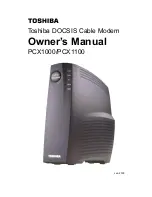
8
Restart on ESDs
Software will attempt to re-initialize a
connection once a substantial electrostatic
discharge causes the device to reset. If the
software is not operational after an ESD, restart
the modem software application.
Agency/Regulatory
Information
The wireless device is approved for use in
many regions of the world. In these regions, the
device meets all radio frequency exposure
requirements. The following approvals and
notices apply in specific regions as noted.
CE Approval (European
Union)
The wireless device is approved to be used in
the member states of the EU. Huawei declares
that the wireless device is in compliance with
the essential requirements and other relevant
provisions of the Radio and
Telecommunications Terminal Equipment
Directive 1999/5/EC (R&TTE Directive).
Radio Frequency Exposure
To ensure compliance at all times with the
R&TTE Directive* 1999/5/EC, the wireless
device can be held in the hand but still requires
a minimum distance of 1.5 cm from the body
when in operation. For body-worn use, it must
be suitably mounted so that it is at least 1.5 cm
away from the body. Mounting accessories (for
example, belt clips) cannot be made of metal.
Do not put the wireless device in your pocket.
* The general public RF exposure limits
referenced in the R&TTE Directive are
consistent with the published Guidelines of the
International Commission on Non-Ionizing
Radiation Protection (ICNIRP) 1998. ICNIRP
is a formally recognized non-governmental
organization in Non-Ionising Radiation
Protection for the World Health Organisation
(WHO), the International Labour Organisation
(ILO) and the European Union (EU). For more
information, visit the ICNIRP website at
www.icnirp.de.
Certification Information
(SAR)
THIS DEVICE MEETS THE
GOVERNMENT'S REQUIREMENTS FOR
EXPOSURE TO RADIO FREQUENCY
ELECTROMAGNETIC FIELD.
Your wireless device is a low-power radio
transmitter and receiver. When it is running, it
emits low levels of radio frequency energy
(also known as radio waves or radio frequency
fields).
Governments around the world have adopted
comprehensive international safety guidelines,
developed by scientific organizations, e.g.




























